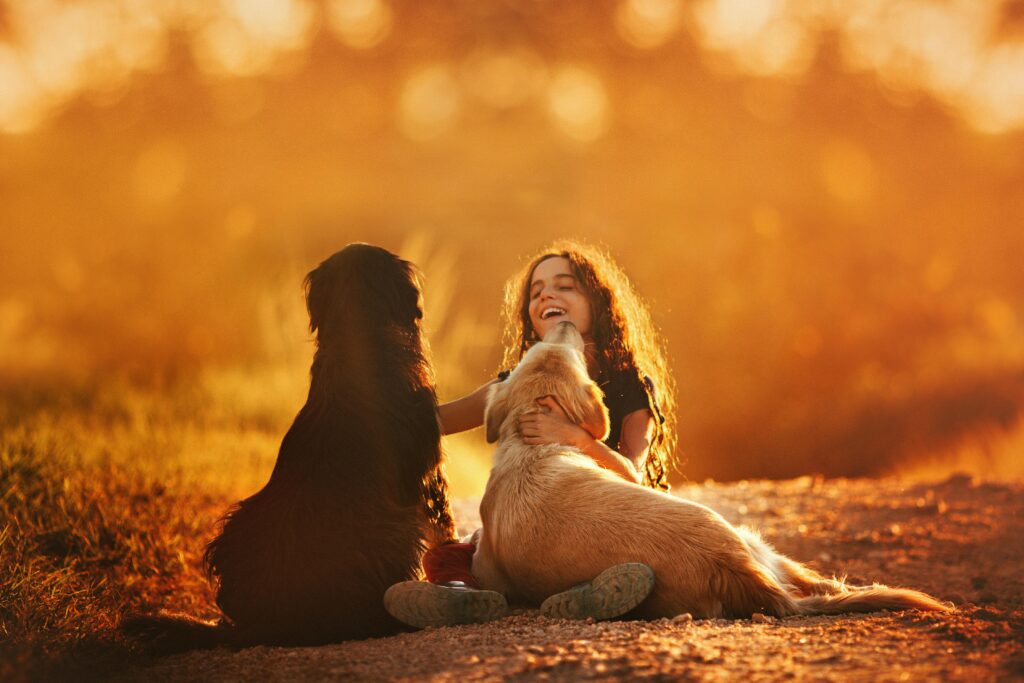Pets have a significant, positive impact on children’s development on many levels – emotional, social, cognitive and physical. The presence of a pet in the home can not only enrich a child’s daily life, but also support their mental and physical health.
Children who take care of animals learn empathy, compassion and responsibility for a living being. Regular care of an animal, such as feeding, washing or walking, teaches systematicity and care for others. Contact with an animal can also have a soothing effect and help cope with stress, anxiety or frustration. Animals, especially dogs and cats, are a source of emotional support, helping a child to relax and calm down. Children who take care of an animal feel needed and able to fulfill their duties, which has a positive effect on their self-esteem.
Communication with animals teaches children to communicate in different ways – verbally and non-verbally. They learn to interpret animal signals, which supports the development of the ability to read the emotions and intentions of others. Having a pet promotes cooperation in the family – a child can engage in everyday chores together with other household members, which builds family bonds. Animals also often become a link in contacts with peers, especially on walks with a dog. Observing and getting involved in caring for an animal teaches children the rules of life in society, such as patience, responsibility and consistency in action.
Animals, especially dogs, encourage children to be more physically active, such as walking, running or playing outside. Regular physical activity supports the healthy development of a child and helps maintain a healthy weight. Studies suggest that children who grow up with animals, especially dogs and cats, are less susceptible to allergies and infections. Contact with animals supports the development of the immune system through more frequent exposure to various microorganisms. Animals can act as natural “therapists”, reducing stress and tension. For example, petting a cat or playing with a dog can help regulate heart rate and blood pressure.
By observing the behavior of animals, children learn about the needs of other creatures, life cycles, differences in behavior and interactions. Animals can also inspire children to expand your knowledge – children often become interested in nature, biology and ecology. For children with learning difficulties, the presence of an animal can be a motivation to develop skills. For example, a child can learn to read aloud to their pet, which improves self-confidence and language skills. Animals introduce some structure and rituals into a child’s life, such as walks or feeding. This teaches planning and organization.
There are also therapy animals. Having a therapy dog can help children with developmental disorders such as autism or ADHD. These animals can calm, regulate emotions and support the child in social situations. Children with emotional difficulties, fears or adaptation problems often find emotional support in animals. For example, petting a dog or cat can help reduce emotional tension. Children who have difficulty establishing relationships with other people often develop strong bonds with animals, which has a positive effect on their emotional and social development.
Children who grow up with animals have the opportunity to understand the natural cycles of life, including death. It can be a difficult experience, but it also gives your child the tools to cope with the emotions of loss and grief.
Pets have a multifaceted impact on a child’s development, supporting their emotional, social, cognitive, and physical development. Having a pet can teach a child empathy, responsibility, and help regulate emotions and stress. For children with special needs, animals can be therapeutic, providing support and a sense of security.
So why not adopt a kitten: Wales Cat Centre – Canolfan Gathod Cymru https://www.facebook.com/CatsProtectionWales

